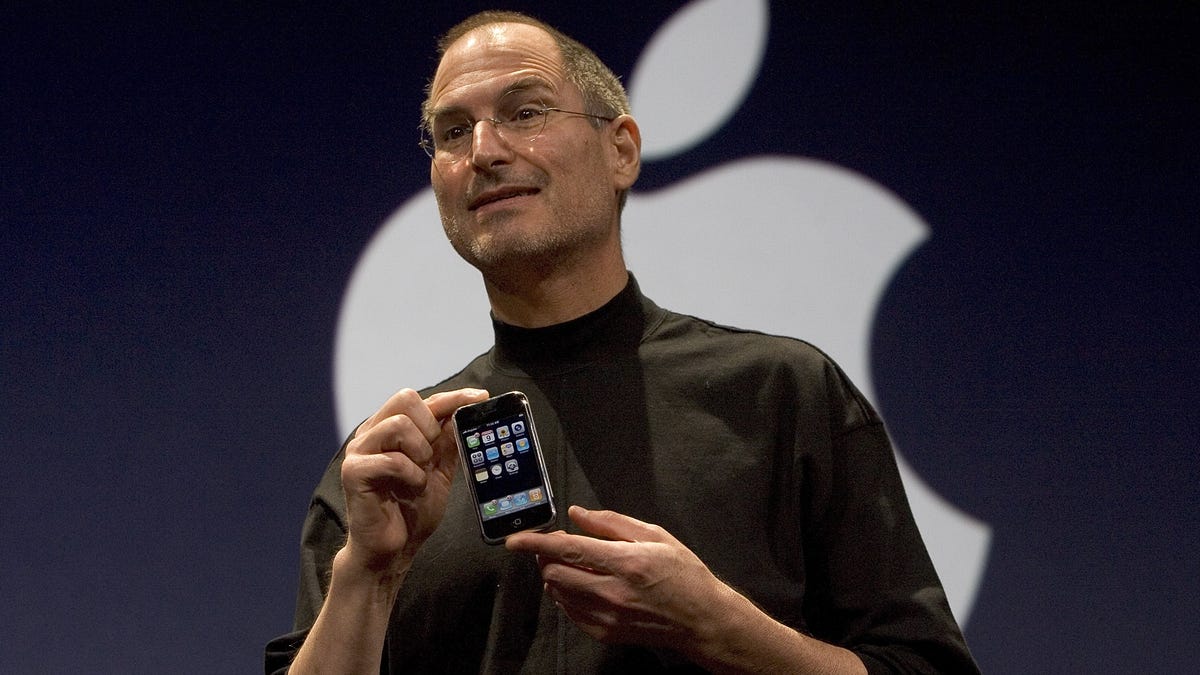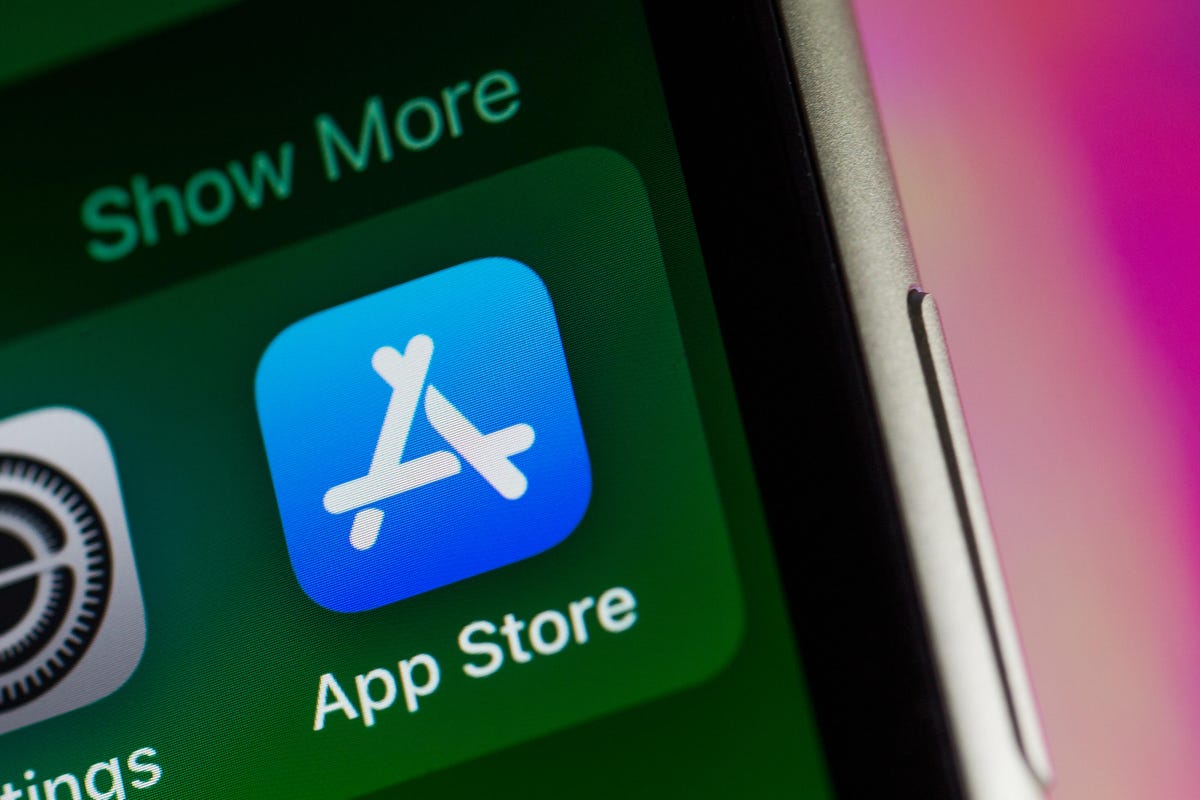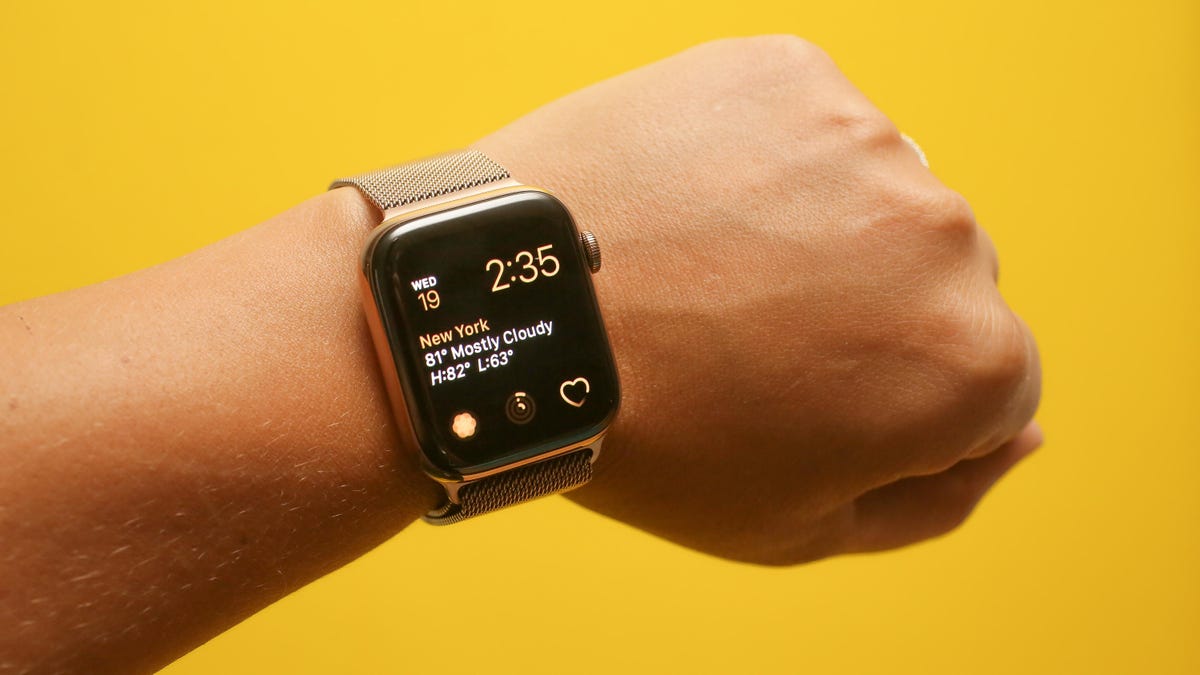Technologies
It’s Time to Stop Waiting for Apple’s Next iPhone Moment
Commentary: The iPhone took off because it came at the right time — a moment that may be impossible to re-create.

When the original iPhone arrived in 2007, few people knew it would lay the foundation for the devices we now carry in our pockets each day. As the June 5 date of Apple’s Worldwide Developers Conference approaches, all eyes will be focused on whether the tech giant can re-create that impact with its first entirely new product in almost a decade: a head-mounted computer.
The iPhone wasn’t the first smartphone, nor was it the first mobile device to achieve cultural relevance as a status symbol. But it came at just the right moment, and there arguably hasn’t been such a perfectly timed tech product launch since. Re-creating that moment will be challenging, even for Apple.
The tech industry has evolved a lot since 2007, and so has our relationship with technology. Devices like the iPhone and the BlackBerry revolutionized the way we access information and communicate, at a time when the idea of constant internet connectivity was relatively new.
Advertiser Disclosure
But the biggest new gadgets since then (think smartwatches, wireless earbuds) were initially useful because they untethered us from those phones, helping us better navigate the influx of alerts flowing from them. It took years for the Apple Watch to establish its direction as a health and wellness device, and I suspect it’ll similarly take time for the headset to find its niche.
The arrival of a completely new product — whether it be a smartwatch or a headset — doesn’t feel the same as it did 16 years ago. Nor should it.
For the iPhone, timing was everything
The iPhone debuted at a formative time for personal technology. As the internet became a more integral part of our lives, so did the need to take it with us.
The iPod, BlackBerry phones and other personal digital assistants (better known as PDAs) provided a way to keep us connected on the go as people recognized the need to listen to music, send emails, and manage calendars away from home. Shipments of handheld computers from brands like BlackBerry and Palm rose 18.4% in 2006, according to Gartner data reported by the Associated Press in early 2007, underscoring the demand for mobile access to email and other communications.

Research in Motion’s BlackBerry Curve 8350i, from 2008. The BlackBerry first appeared in 2002.
Then the iPhone came in 2007 and changed everything. Steve Jobs famously introduced the first iPhone as a phone, an iPod and an Internet communicator in one device. What made the iPhone so impactful was that those three things were already necessities in people’s lives, as the success of cell phones, the iPod and home computers showed.
In 2000, 51% of US households had one or more computers, and more than 40% of households were connected to the Internet, according to a 2001 New York Times report covering Census Bureau data. The US added a record-breaking 25.7 million new mobile phone users in 2005, reported InfoWorld in 2006, citing data from the Cellular Telecommunications & Internet Association. And sales of MP3 players were booming in the early 2000s, as market researcher IDC reported back in 2002.
Clearly the internet, MP3 players and cell phones were permeating everyday life long before the iPhone made its debut at the Macworld conference in 2007. The iPhone was the culmination of these trends, showing how hardware was catching up to the way people were already using tech products in their daily lives. Though PDAs and early «smart» phones like the IBM Simon were a promising start, they were largely designed to be handheld computers with cell phone functionality.
The iPhone and other modern smartphones took that idea a step further. When Apple’s App Store arrived later in 2008, apps turned the iPhone and other handheld devices into Swiss Army Knives, expanding their functionality beyond the business-focused PDAs of years past. Today, mobile devices can serve as phones, internet and email portals, music players, mini-TVs, flashlights, wallets, keys and so much more, largely thanks to the proliferation of apps.

The App Store turned the iPhone into much more than a phone, iPod and internet communicator.
But it’s important to remember that even the iPhone wasn’t an overnight success. The original model’s price and initial exclusivity to AT&T, combined with the notion that Apple was a newcomer to the mobile phone business, certainly resulted in some skepticism about the iPhone’s future. Let’s not forget that the first model also had many shortcomings, as former CNET Senior Managing Editor Kent German pointed out in his review.
Still, the iPhone had a long-term impact because it filled a need at the right time — even if it wasn’t immediately accessible to everyone right away. Consider technologies that came before their time. Microsoft’s SPOT platform sought to turn everyday objects like watches and household appliances into smart gadgets — preceding today’s smartwatches and the so-called internet of things boom. The SPOT watches never caught on, thanks in part to their bulky design and the subscription fee required to access Microsoft’s MSN Direct service, as my colleague David Carnoy wrote in 2008, marking the end of Microsoft’s efforts in that area at the time.
An Apple headset has a lot more competition for our attention
Fast-forward to today, and the tech world is buzzing about what’s expected to be a similar moment in Apple’s history. The company will reportedly introduce its first mixed reality headset on June 5, which Bloomberg says will have apps and software features that span gaming, communication, fitness and more. Apple has a reputation for popularizing devices like the smartphone, tablet and smartwatch, so the expectation is that it will do so again for headsets.
That may very well be true. But making head-mounted computers as ubiquitous as the iPhone is a tough task, even for Apple. Once again, it will all come down to timing. From smartwatches to earbuds, tablets to smart speakers, there are plenty of gadgets in our lives designed to fulfill different needs — many more than when the first iPhone launched.

Devices like the Apple Watch can help us manage the influx of notifications coming from our phones.
American households owned an average of 16 connected devices as of 2022, according to research firm Parks Associates. A Pew Research survey from 2021 found that 31% of US adults said they’re constantly online. A Reviews.org survey, the results of which were published this month, found that 56.9% of Americans said they’re addicted to their smartphone.
A gadget like Apple’s virtual reality headset, which will cost around $3,000 according to Bloomberg, will have to be very compelling to demand attention in a world already oversaturated with screens and sensors.
The iPhone may have revolutionized the way we communicate and use the internet. But we’re now in an era in which people are looking to disconnect from their phones more easily, and that shows in the new tech products from the last decade.
What do smartwatches, wireless earbuds and smart speakers have in common? They all allow us to access the internet without reaching for our phones, whether it’s skipping to the next track on your Spotify playlist, asking a virtual assistant for today’s weather forecast or getting a text message on your wrist. A mixed reality headset would seemingly do the opposite by further plunging you into whatever content you’re experiencing at the moment.
Even the developments in generative artificial intelligence, or AI, that can create content based on prompts, are designed to help us spend less time buried in screens. Google, for example, recently showed off a new Gmail feature called Help Me Write that can draft messages for you based on a quick prompt. Tools like these could shorten the amount of time we spend replying to emails and other communications, and could arguably be more impactful than new hardware. (In fact, if you’ve been following tech headlines in 2023, AI is apparently in the midst of its own «iPhone moment.»)
The slow-burn effect
In recent years, it’s taken longer for new Apple gadgets to establish a role in our lives, and the Apple Watch is the strongest example of this. When introducing it back in 2014, Apple initially positioned it as a personal timepiece by highlighting its stylish design and time-telling accuracy, before mentioning health and fitness.
But as the gadget matured and became more popular, Apple leaned more fully into health. It added ECG functionality in 2018 with the Series 4 model, enabling the watch to provide more data about cardiac health and signaling a turning point for the device. In 2019, Apple CEO Tim Cook told CNBC that Apple’s «greatest contribution to mankind» will be about health. Roughly three years after the first Apple Watch arrived, it became clear that health, fitness and wellness tracking would be the its most important purpose. The iPhone may not have been in everyone’s pockets right away, but its role as a handheld computer, MP3 player and phone was apparent from the start.

The Apple Watch Series 4 was the first with ECG support.
Is it the right time for Apple’s rumored headset? I don’t have the answer, and I’m not sure if Apple does either. But one thing is for certain: If the headset is a hit, its success will look a lot different than that of the first iPhone. We might not understand the headset’s role in our lives until years after its release, if the Apple Watch’s trajectory is any indication. That wouldn’t deem it a failure, it’s just a sign of the times.
The so-called «iPhone moment» may be behind us for good. Or maybe it’s just changed.
Technologies
Today’s NYT Mini Crossword Answers for Wednesday, Nov. 5
Here are the answers for The New York Times Mini Crossword for Nov. 5.

Looking for the most recent Mini Crossword answer? Click here for today’s Mini Crossword hints, as well as our daily answers and hints for The New York Times Wordle, Strands, Connections and Connections: Sports Edition puzzles.
Need some help with today’s Mini Crossword? Some of the clues are tricky, but we have all the answers, so read on. And if you could use some hints and guidance for daily solving, check out our Mini Crossword tips.
If you’re looking for today’s Wordle, Connections, Connections: Sports Edition and Strands answers, you can visit CNET’s NYT puzzle hints page.
Read more: Tips and Tricks for Solving The New York Times Mini Crossword
Let’s get to those Mini Crossword clues and answers.
Mini across clues and answers
1A clue: Fresh addition to a pasta sauce, perhaps
Answer: BASIL
6A clue: Log ___ (water park ride)
Answer: FLUME
7A clue: Group of ships
Answer: FLEET
8A clue: Some drinks from «streams»
Answer: SODAS
9A clue: Documentarian Burns
Answer: KEN
Mini down clues and answers
1D clue: Closest pals, for short
Answer: BFFS
2D clue: «No problems here!»
Answer: ALLOK
3D clue: Shoe material in an Elvis hit
Answer: SUEDE
4D clue: «That is to say …»
Answer: IMEAN
5D clue: Tennis do-overs
Answer: LETS
Technologies
Apple Reportedly Planning Cheaper Macs to Compete With Budget Chromebooks, PCs
Apple doesn’t market its machines as affordable, but that could be changing.

Apple may release more affordable Mac laptops to compete with Chromebooks and budget-friendly Windows laptops as early as 2026.
Bloomberg’s Mark Gurman reports the company has plans to roll out a machine for «well under $1,000.» According to Gurman, the new laptop is already in early production under the codename J700. This matches earlier rumors that a low-cost MacBook Air was in the pipeline at around $599, which would allow Apple to directly compete with other cheap laptops, including Chromebooks and Windows PCs.
A representative for Apple did not immediately respond to a request for comment.
Don’t miss any of our unbiased tech content and lab-based reviews. Add CNET as a preferred Google source.
According to the report, costs will be kept down by using a lower-end LCD that’s smaller than the 13.6-inch MacBook Air, potentially making the new affordable MacBook as small as 12 inches.
Another way Apple could reduce the cost is by using an A-series iPhone chip, which falls short of the top-tier performance offered by the MacBook Pro or the current M4 Air. The upcoming chip may be a variant of the A19 Pro chip that debuted with the iPhone 17 Pro and iPhone Air, which Apple says is capable of MacBook-level performance.
As CNET senior editor Matt Elliott noted, the promise is a bold one. He speculates that the rumored $599 MacBook Air may get the same smartphone processor, or an M-series chip based on that architecture.
Bloomberg also reports that a MacBook Pro with an M5 Pro and M5 Max chip is in development, and Apple has completed work on a MacBook Air powered by the M5 chip, which is planned for release early next year.
The affordable laptop would be designed for casual users, students and businesses, specifically individuals who need a device for tasks such as web browsing, light media editing and document creation. The tech giant is also targeting the education market, as well as iPad buyers who may also want a traditional laptop.
«If this is strictly a move to entice consumers with a high-quality, lower-cost MacBook running MacOS in place of an iPad with a keyboard, then yes, Apple can likely take a chunk of that market,» said Josh Goldman, managing editor at CNET.
«Making inroads into the education market at this point, where Chromebooks have taken over since the pandemic, will prove challenging, though I’m sure it’s nothing that throwing billions of dollars at can’t fix,» CNET’s Goldman said.
This price range is ‘a big departure’
Price is likely to be key here. A $599 price tag would place the new Mac in the same range as more affordable Chromebooks and entry-level laptops, representing a significant change from Apple’s previous strategy.
«Apple potentially dipping into the Chromebook range of $300 to $500 with a new MacBook is a big departure,» said Goldman.
He notes that one of Apple’s most affordable MacBooks is the M4 MacBook Air, available new starting at $999 for the 13-inch model. Walmart still sells a new M1 MacBook Air, a 5-year-old laptop, for around $600.
By contrast, an iPad 11th Gen with a Magic Keyboard will run you around $600, making it clear that Apple’s target market for the rumored device is students and lighter users.
Apple typically hasn’t targeted the lower-priced segment of the market with its MacBooks. However, with consumer wallets under pressure from inflation, high tariffs and layoffs, an affordable MacBook could be imperative and timely.
Technologies
Today’s NYT Connections: Sports Edition Hints and Answers for Nov. 5, #408
Here are hints and the answers for the NYT Connections: Sports Edition puzzle for Nov. 5, No. 408.

Looking for the most recent regular Connections answers? Click here for today’s Connections hints, as well as our daily answers and hints for The New York Times Mini Crossword, Wordle and Strands puzzles.
Today’s Connections: Sports Edition is pretty diverse. The blue answers stuck out to me right away, because some of them are super famous and the others felt like they belonged with those names. If you’re struggling but still want to solve it, read on for hints and the answers.
Connections: Sports Edition is published by The Athletic, the subscription-based sports journalism site owned by the Times. It doesn’t show up in the NYT Games app but appears in The Athletic’s own app. Or you can play it free online.
Read more: NYT Connections: Sports Edition Puzzle Comes Out of Beta
Hints for today’s Connections: Sports Edition groups
Here are four hints for the groupings in today’s Connections: Sports Edition puzzle, ranked from the easiest yellow group to the tough (and sometimes bizarre) purple group.
Yellow group hint: How to see a game.
Green group hint: Soccer.
Blue group hint: Giddy up!
Purple group hint: Not a run play.
Answers for today’s Connections: Sports Edition groups
Yellow group: Ways to consume a sporting event.
Green group: NWSL teams.
Blue group: Triple Crown horse racing winners.
Purple group: Pass ____.
Read more: Wordle Cheat Sheet: Here Are the Most Popular Letters Used in English Words
What are today’s Connections: Sports Edition answers?
The yellow words in today’s Connections
The theme is ways to consume a sporting event. The four answers are in person, radio, streaming and television.
The green words in today’s Connections
The theme is NWSL teams. The four answers are Current, Dash, Pride and Spirit.
The blue words in today’s Connections
The theme is Triple Crown horse racing winners. The four answers are Citation, Gallant Fox, Omaha and Secretariat.
The purple words in today’s Connections
The theme is pass ____. The four answers are breakup, interference, protection and rush.
-

 Technologies3 года ago
Technologies3 года agoTech Companies Need to Be Held Accountable for Security, Experts Say
-

 Technologies3 года ago
Technologies3 года agoBest Handheld Game Console in 2023
-

 Technologies3 года ago
Technologies3 года agoTighten Up Your VR Game With the Best Head Straps for Quest 2
-

 Technologies4 года ago
Technologies4 года agoVerum, Wickr and Threema: next generation secured messengers
-

 Technologies4 года ago
Technologies4 года agoBlack Friday 2021: The best deals on TVs, headphones, kitchenware, and more
-

 Technologies4 года ago
Technologies4 года agoGoogle to require vaccinations as Silicon Valley rethinks return-to-office policies
-

 Technologies4 года ago
Technologies4 года agoOlivia Harlan Dekker for Verum Messenger
-

 Technologies4 года ago
Technologies4 года agoiPhone 13 event: How to watch Apple’s big announcement tomorrow
